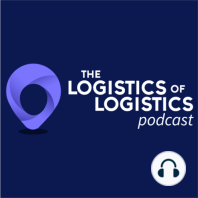46 min listen

Increase Your RFP Win Rate by Fixing the Bid and Tender Process with John Golob
Increase Your RFP Win Rate by Fixing the Bid and Tender Process with John Golob
ratings:
Length:
36 minutes
Released:
Sep 2, 2019
Format:
Podcast episode
Description
[00:52] Tell us a little bit about you and your company. I am a John Golob, Founder and CMO of Winmore. We are based in San Francisco. Winmore is bid and tender collaboration software for freight forwarders and brokers, providing visibility, efficiency, and process automation that helps our LSP customers lower costs and win more of the right bids. [01:26] Tell us a little bit about your background. I grew up in Los Angeles. Briefly, I worked in entertainment, which was my first introduction to supply chain. I quickly found myself working in sales, predominantly selling computers and software. [03:56] When and why did you start Winmore? We started in 2013, largely because of a conversation I had at SalesForce. They were concerned about industries such as logistics having a hard time using out-of-the-box CRMs. Logistics gets new customers through inbound RFPs, so we focused on the different marketing cloud approach it needed compared to other industries. [05:50] Let’s describe the problem a little bit. When we talk about the bid and tender process, what do you mean you say bid? A bid is, effectively, a response to an RFP or a tender. RFP is the term used in the US, while tender is used in Europe. About 60% of revenue for logistics companies comes through the RFP process. [07:20] What’s wrong with the bid and tender process? It’s broken in two areas. The first is the behavior on the shipper’s side. They increasingly send out Excel-based RFPs that have thousands of combinations. The second problem is that 3PLs today, in order to prepare an adequate response, must drive an enormous level of collaboration across many team members. They all have different agendas. 3PLs have to respond, and they’re doing that at a significant cost. [11:12] Once you’ve got an RFP in hand, who manages that in an average 3PL? Sometimes it’s under finance, sometimes it’s under marketing. We have found that there is no best practice for where the RFP process resides. It usually comes down to someone who has the best attention to detail. [13:29] There are usually a lot of emails and Excel spreadsheets around. Tell us about how that information gets managed. The first problem that people usually struggle with is finding what they priced something at in the previous year. This process is very broken and not well designed for a collaborative process. [15:16] What’s another reason that you decided to find a solution? There’s been a real toughening up on the shipper’s side. The mindset of being absolutely relentless with providers is holding true on the RFP side. They literally will not accept a bid if it comes in two minutes past the deadline. Understanding the pricing used to bid on business, even if it wasn’t won, didn’t reside anywhere in 3PLs. This further made us realize the opportunity at hand. [19:05] Six years ago, you had the idea that you could fix this process. Tell us what your thoughts were and what has changed over that time. Having a backer like SalesForce allowed us to start a lot of conversations. We were able to build some close relationships. We were among the few software companies that were starting to have a discussion around what analytics could do for commercial operations. The CIO role in an average 3PL has gone from a relatively insignificant role to a very important one. [21:53] How did you know what was broken and who were you working with? We quickly realized there were three areas that were broken. The qualification process. About 22% of RFPs are price checks, meaning that they’ll have no opportunity to be added to your top line. If you can qualify them right away, you’ll be one step ahead. We wanted to give commercial leaders visibility so they could have confidence in knowing that every step of the RFP process was mapped out. Finally, we saw that people were communicating in new ways. We had to build a new way for teams to work together. We tried to get the biggest names we could, so we worked with DHL and C.H.
Released:
Sep 2, 2019
Format:
Podcast episode
Titles in the series (100)
5 Ways 3PL Sales Has Changed and What You Can Do About It with Ann Holm: Podcast Summary: Joe is joined by Ann Holm who, in addition to being a good friend of Joe’s, is an executive coach who often works with people in the logistics field. The two inform the audience of 5 ways 3PL (third-party logistics) sales have... by The Logistics of Logistics